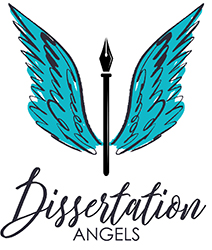So it’s time to begin your lit review…
Of the five dissertation chapters, I’ve found my clients often dread the literature review the most. The entire dissertation is a test of your fortitude, but the lit review is particularly difficult for many students. While the official purpose of the literature review is to demonstrate your familiarity with an existing body of research and support the need for your particular study, you probably understand there are also some unstated goals of this requirement. The literature review is an excellent opportunity to demonstrate your determination, as well as your ability to jump through hoops (Flaming hoops. Swinging side to side, like a giant pendulum. Controlled by your chair). It also serves as a tool for schools to weed students out. In order to maintain the value of a doctorate, the demand must be kept high by limiting the reward of those credentials.
As much as the literature review can begin to feel like the bane of your existence, at the end of the day, you need to look at it for what it really is – a glorified research paper. And surely, if you’re a doctoral student, you’ve written one or two of those before. So if you’re struggling to make it through your literature review, or you’re embarking on your dissertation journey with trepidation related to the ominous Chapter 2, go pour yourself a glass of wine, kick your feet up, and read on for a dose of perspective and a couple of helpful tips.
What is the literature review?
As mentioned, the aim of the literature review is to demonstrate your familiarity with existing relevant research in a way that contextualizes your study and exposes a gap in the literature. Chapter 2 should be a well-organized synthesis of relevant studies (published within five years of the year you plan to graduate, whenever possible). The literature review should flow logically from one section to the next, and although it is essentially a presentation of a bunch of studies smashed together, it shouldn’t read that way. The chapter should be cohesive and the relevance of each study you discuss should be explicitly stated, if not clearly implied.
It is important to demonstrate a bit of forethought when planning your lit review, because if you don’t, it could come back to haunt you. As much as you may want to slam the door shut on Chapter 2 and run away while deliriously declaring your resolve to never write a review of secondary research again (a delusion, might I add, if you plan to enter the fancy world of academia), you will revisit your lit review again before your dissertation is complete. That’s right, the discussion of your results in Chapter 5 requires you to demonstrate the relationship between your findings and the studies you discussed in your literature review (even if it’s a stretch… even if your findings don’t seem to have clear correlations to discuss, you must find them). For this reason, it’s smart to be a little proactive when selecting studies for Chapter 2. Often you have some idea of what your results will indicate, so discussing studies in Chapter 2 that will demonstrate clear alignment or contradictions to your anticipated results is pretty clever, if you ask me.
What does “exhaustive” mean?

Unfortunately, the development of mental exhaustion during the process doesn’t qualify your lit review as “exhaustive.” An “exhaustive review of the existing literature” is a phrase you’ve probably seen over and over in other students’ dissertations, but what exactly does exhaustive mean? Truly, the term exhaustive in reference to your literature review is one of the many annoying subjectivities that chairs, mentors, and committee members like to pretend are actually objective factors. I’ve seen chairs who approved 20-page mini literature reviews supported by five pages of references as adequate, and others who kicked back 60-page reviews supported by 20 pages of references for not being exhaustive. For this reason, it’s a good idea to clearly understand your chair’s expectations of the lit review before you begin. Chairs and mentors may be reticent to provide much detail, but the more clearly you can understand their expectations in the beginning (captured in writing, always!), the less likely your literature review is to be volleyed back and forth between you and your chair in an endless stream of revisions.
In addition to understanding your chair’s expectations, the research you perform for your literature review will begin to become exhaustive once you’re able to clearly identify the experts and seminal literature on your topic. Also, once you start to recognize cited studies and can begin to weave connections between them, you’re probably doing a good job of digging into and assimilating relevant research.
Tip #1: Let your outline emerge as you research
No doubt, as you become more entrenched in your body of research, you’ll learn new things, find new angles from which to view your study, and build connections between topics, themes, hypotheses, and theories you may not have considered earlier. Because of this, I’m a fan of letting your outline emerge as you review existing literature for your Chapter 2. Allow your outline to be malleable as you read, highlight, think, and organize. We were all taught in grade school that the first step to writing any sort of research paper is to create an outline, but the simplicity of the topics you wrote about in grade school was likely to permit that. However, when you’re reviewing hundreds of scholarly resources on a topic, it’s nearly impossible to write an outline before reviewing a significant number of studies. You have to lay out all your puzzle pieces and make sure they’re right-side-up before you can strategize about how to most efficiently put those pieces together.
Tip #2: Remember that writing a literature review is a dynamic process
Just as it’s perfectly fine for your outline to emerge and change as you review existing studies, it’s also completely okay to allow the chapter to evolve as you write. As you work, you may find that a particular sub-header no longer seems relevant, or that there was an entire section you didn’t include in your outline that now seems critical to fully conceptualizing existing research for your study. Thus, it’s okay to move things around, add new sections, or delete passages that no longer seem relevant.
Tip #3: Know when to say “when”
Now, although I strongly encourage students to allow themselves to make changes as they research and write the lit review, it’s also critical that you understand when to put the brakes on. Do not – I repeat – Do NOT get owned by your lit review. I’ve worked with students who had a very difficult time wrapping up Chapter 2 because they hadn’t learned when to say “when.” This sort of goes back to the question of “exhaustion” I mentioned earlier. If you have a very narrow scope in an untapped research territory, you might find it hard to know when to stop integrating research and expanding your literature review. Similarly, if your scope is necessarily more broad, it may seem difficult to know when to stop adding more information. However, if you don’t do this, the literature could, quite possibly, never end. Sure, if you come across a newly published study that’s strongly related to your research, finding a way to tie it into your chapter can be of benefit, especially in terms of demonstrating the timeliness of your study. However, compulsively adding more and more studies to an already comprehensive lit review because you’re afraid of what will happen if you leave any stone unturned is a surefire way to make you lose your mind. Once you have a draft you feel is solid, provides an acceptable background for your study, and meets any requirements outlined by your school’s dissertation handbook (or your chair’s explicitly stated requirements), submit it. I promise, if your chair or committee wants you to expand the chapter, they will let you know.
Tip #4: Hire an editor and coach

If you’re finding yourself staring at the computer screen for hours on end only to produce two crappy sentences, it might be time to call in backup. If you’re having a hard time defining the scope of your literature review, or are struggling with academic writing, having an editor and coach in your corner can be a wonderful way to refocus your efforts and stop squandering your time. The dissertation can be a tiring and expensive journey, and the more time you waste driving yourself crazy over Chapter 2, the more tuition you have to pay to remain in your program, and the longer you have your research hanging over your head.
The majority of students have to hire an editor at some point to help them with basic grammar, style, and formatting issues with their dissertations. However, the work that most editors do stops there. Hiring a solid developmental editor and coach is a more proactive and collaborative approach that can significantly reduce the overall time you spend on your dissertation. Coaches can help you navigate the rules of the dissertation game, and one who is also a writer and researcher can help you fine-tune your study. If you’re feeling stuck and need some help to get moving again, check out www.dissertationangels.com or contact me to discuss the coaching and editing solutions I offer.
As always, keep it moving. You started your dissertation for a reason. Remember those motivations and finish it!
